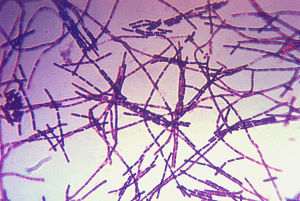In this second part of my three part series on forensic pathology, I will be exploring the role of the forensic pathologist in society at large. Of all the specialties, forensic pathology seems to be largely ignored and/or unknown to the medical students I have met. Certainly, the prospect of working with dead patients doesn’t appeal to the majority of medical students, but hopefully a review of what forensic pathologists do will remind everyone that we should not take for granted the important social role they fill. In her book Postmortem: How Medical Examiners Explain Suspicious Deaths, Stefan Timmermans puts it the following way:
“Death is not an individual but a social event. When, with a barely noticeable sigh, the last gasp of air is exhaled, the blood stops pulsating through arteries and veins, and neurons cease activating the brain, the life of a human organism has ended. Death is not official, however, until the community takes notice.”
Many practicing physicians are surprisingly hazy on the subject, which becomes a problem when these physicians improperly fill out death certificates (a common occurrence which drains public resources to straighten out) or fail to recognize deaths as suspicious and warranting investigation.
Medical examiners are usually certified forensic pathologists who have been appointed to the medical examiner position as an employee of the government. They serve a vital role in the government’s public health systems; if a public health danger emerges of an unknown nature and is killing members of the community, who better to solve this pressing puzzle than a medical examiner? When death occurs under unexpected or unknown circumstances, i.e. when it is suspicious, then the probability that a public health danger is lurking about increases. If we don’t know why people are dying, how do we know who is at risk? How can we mitigate the threat? It is the responsibility of the medical examiner to figure this out, whether the threat is a murderer, an infectious disease, a faulty product on the market, etc.
When death occurs under certain circumstances, the body and investigation come under the jurisdiction of the medical examiner. In fact, by law (in San Francisco at least), a medical examiner must investigate the following types of deaths: violent, sudden, unusual, unattended by a physician in the last 20 days or with no medical history, related to an accident (either old or recent), homicide, suicide, due to an infectious epidemic, anything due to criminal acts, all deaths in operating rooms or following surgery or a major medical procedure, all deaths in prisons, jails, or of a person under the control of a law enforcement agency. Some of these categories are purposefully vague, in order to encourage doctors and other agencies to contact the medical examiner if the death is questionable in any regard whatsoever.
Medical examiners have the responsibility to unearth public health threats as they investigate all of these unusual deaths. For example, it was medical examiners who helped identify the mysterious and deadly powder distributed through the U.S. Postal Service in 2001 as anthrax, and who determine infant deaths are caused by defective cribs on the market, and who do the initial work in identifying infectious disease epidemics.

Clearly, forensic pathology is essential in maintaining a safe and just society in modern times. Well trained medical examiners performing top-notch forensic work ensures the timely, correct identification of threats to the community. Their role as public servants should never be taken for granted. They may work behind the scenes, but their work is necessary for our society’s high standards of well-being.
Featured image:
the colour of blood by anjamation



